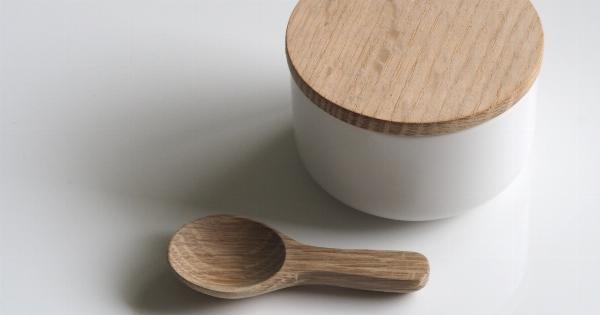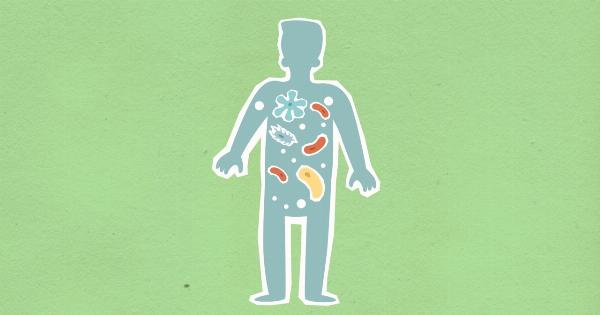In any home, the kitchen is a significant area where food is prepared, cooked, and stored. It is essential to maintain a clean and hygienic kitchen to ensure the safety of the food consumed.
However, there are several common sources of filth that can contaminate the kitchen if not properly addressed. This article will discuss these sources and provide insights on how to prevent and eliminate them to maintain a clean and healthy kitchen environment.
1. Dirty dishes and utensils
One of the most common sources of filth in the kitchen is the presence of dirty dishes and utensils. Leaving dirty dishes in the sink or on the countertops for an extended period can lead to the growth of bacteria and other contaminants.
It is crucial to wash dishes and utensils promptly after use to prevent the spread of filth.
2. Unclean countertops
Countertops are prone to collecting dirt, crumbs, and spills, making them a breeding ground for bacteria and other pathogens. Failure to regularly clean and sanitize countertops can lead to the contamination of food prepared on them.
It is advisable to clean countertops daily, using mild cleansers and warm water to maintain a hygienic cooking surface.
3. Greasy stovetops and range hoods
Cooking oils and greasy residue can accumulate on stovetops and range hoods, creating an unsightly and unhygienic environment. Grease buildup not only attracts dirt and dust but can also pose a fire hazard.
Regularly clean these surfaces with appropriate degreasers to prevent the buildup of filth and maintain a safe cooking area.
4. Dirty and cluttered refrigerator
The refrigerator is a crucial appliance in the kitchen used for storing perishable food items. However, if not properly maintained, it can become a source of filth.
Expired food, spills, and uncleaned containers can lead to foul odors, mold growth, and the spread of bacteria. It is necessary to regularly clean the refrigerator, discard expired items, and keep it organized to prevent contamination of stored food.
5. Garbage bins and disposal areas
Garbage bins and disposal areas can quickly become breeding grounds for bacteria and pests if not properly managed. Food waste left in bins for an extended period can cause foul odors and attract insects and rodents.
Regularly emptying and cleaning the garbage bins, using liners, and ensuring proper waste disposal practices are essential to prevent the accumulation of filth in the kitchen.
6. Contaminated sponges and cleaning tools
Sponges and cleaning tools that are not adequately cleaned and disinfected can become sources of contamination in the kitchen. These tools often come into contact with various surfaces, including countertops and utensils.
If not properly maintained, they can transfer bacteria and other pathogens to different areas. Regularly sanitize sponges, replace them when necessary, and clean other cleaning tools to prevent the spread of filth.
7. Improper food storage
Improper food storage practices can lead to the contamination of food and the spread of filth in the kitchen. Failure to store food at the appropriate temperatures or in sealed containers can create an environment suitable for bacterial growth.
It is important to follow proper food storage guidelines, such as refrigerating perishable items promptly, using airtight containers, and separating raw and cooked foods, to prevent the contamination of stored food.
8. Uncleaned and poorly maintained kitchen appliances
Kitchen appliances, such as ovens, microwaves, and toasters, can accumulate food residue, grease, and dirt if not thoroughly cleaned. Neglected appliances not only become sources of filth but may also affect their performance and lifespan.
Regularly clean and maintain kitchen appliances according to the manufacturer’s instructions to prevent the buildup of filth and ensure their efficient operation.
9. Pet-related sources of filth
If you have pets in the house, they can contribute to the presence of filth in the kitchen. Pet bowls, toys, and other belongings can harbor bacteria and dirt if not regularly cleaned.
Additionally, pet hair and dander can easily find their way into food preparation areas. It is crucial to clean and sanitize pet-related items regularly and limit their access to food preparation areas to maintain a hygienic kitchen environment.
10. Poor personal hygiene
Lastly, poor personal hygiene practices can introduce filth and contaminants into the kitchen.
Failing to wash hands thoroughly before handling food, coughing or sneezing near food preparation areas, or preparing food while sick can contribute to the spread of bacteria and other pathogens. Practicing good personal hygiene, such as regular handwashing, covering mouth and nose while coughing or sneezing, and avoiding food preparation when ill, is essential to prevent the introduction of filth into the kitchen.
Conclusion
Keeping the kitchen clean and free from sources of filth is vital for maintaining a safe and healthy cooking environment.
Regularly addressing common sources of filth, such as dirty dishes, unclean countertops, and poorly maintained appliances, can significantly reduce the risk of contamination and ensure the safety of the food prepared and consumed. By implementing proper cleaning practices, following food storage guidelines, and practicing good personal hygiene, we can create and maintain a clean and healthy kitchen environment.































